Langland Bay Wind Stats
- Forecast
- Maps
- Live
- Weather State
- Spot Information
Wind Stats



This image illustrates how frequently and how strongly the wind blows from different directions over a normal May. The biggest spokes point in the directions the wind most commonly blows from and the shade of blue indicates the strength, with the darkest shade of blue strongest. It is based on 3440 NWW3 forecasts of wind since since 2007, at 3hr intervals, for the closest NWW3 model node to Langland Bay, located 7 km away (4 miles). There are too few recording stations world wide to use actual wind data. Without question some coastal places have very localized wind effects that would not be predicted by NWW3. According to the model, the most common wind at Langland Bay blows from the WSW. If the rose diagram shows a close to circular outline, it means there is no strong bias in wind direction at Langland Bay. On the other hand, dominant spokes show favoured directions, and the more deep blue, the stronger the wind. Spokes point in the direction the wind blows from. During a typical May, the model suggests that winds are light enough for the sea to be glassy (the lightest shade of blue) about 15% of the time (5 days each May) and blows offshore 28% of the time (0 days in an average May). Over an average May wind stronger than >40kph (25mph) was forecast for only a single days at Langland Bay



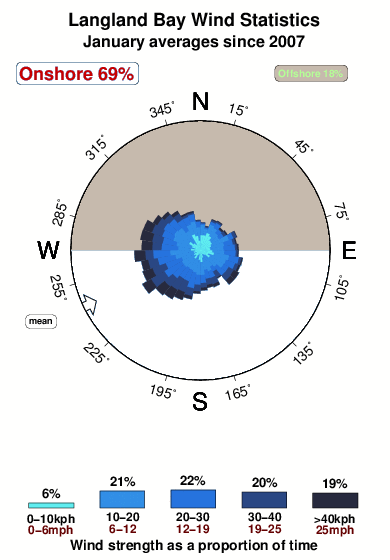
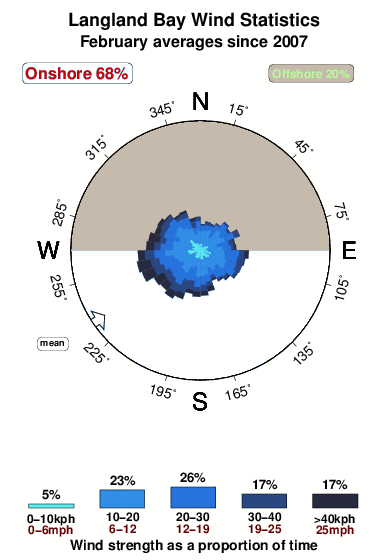
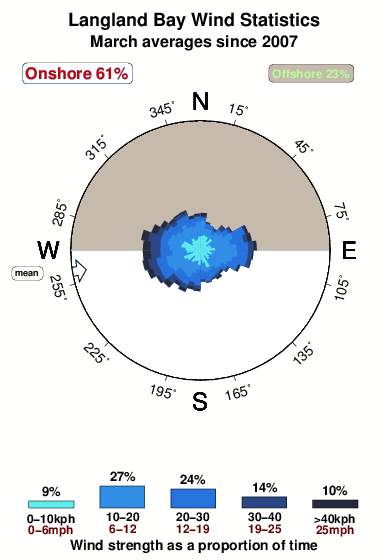
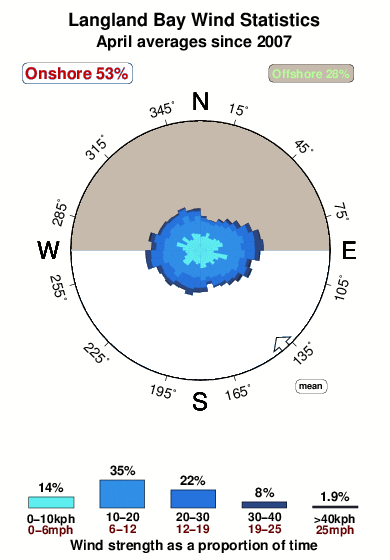
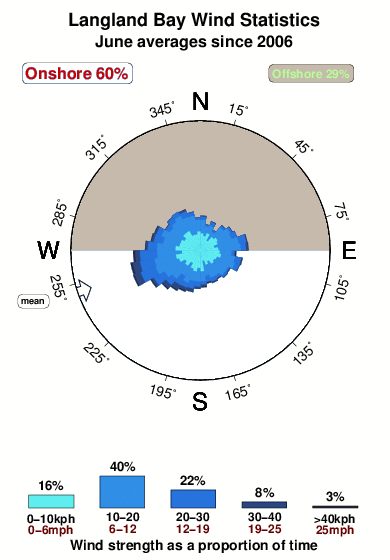
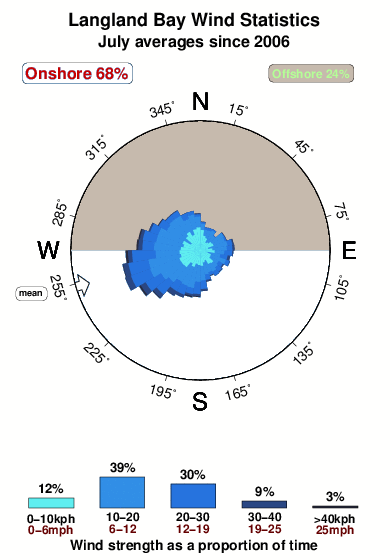
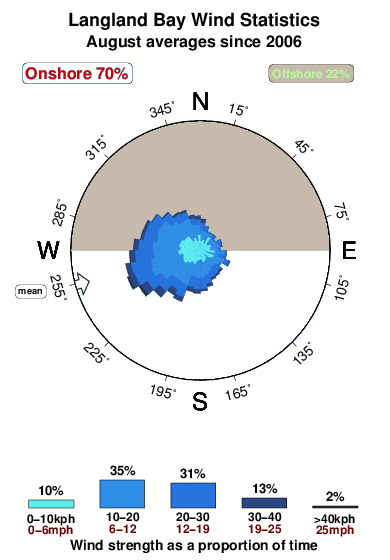

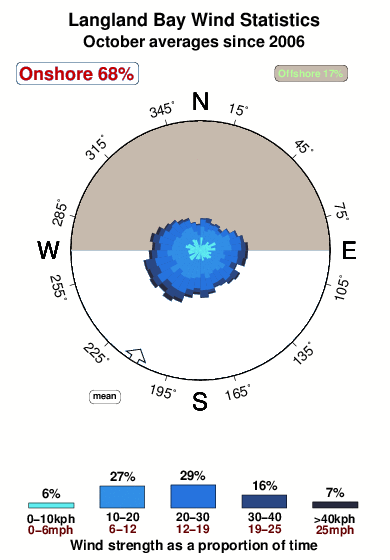
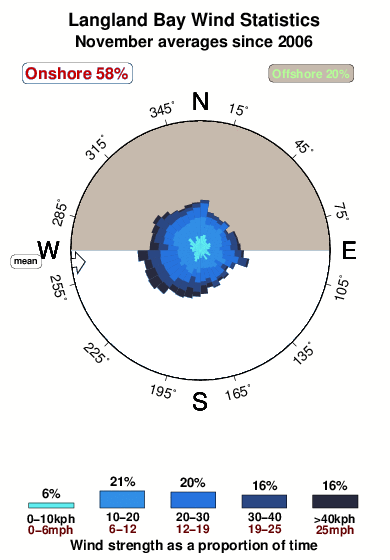
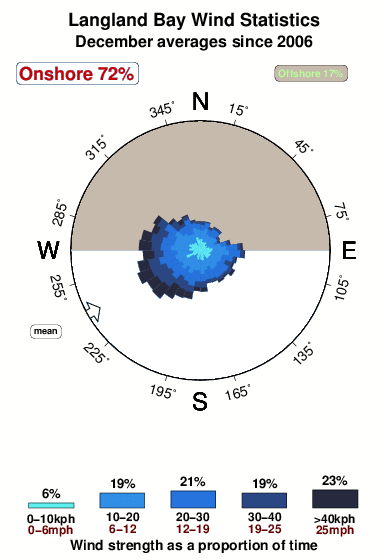




 Nearest
Nearest